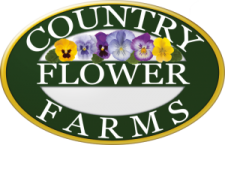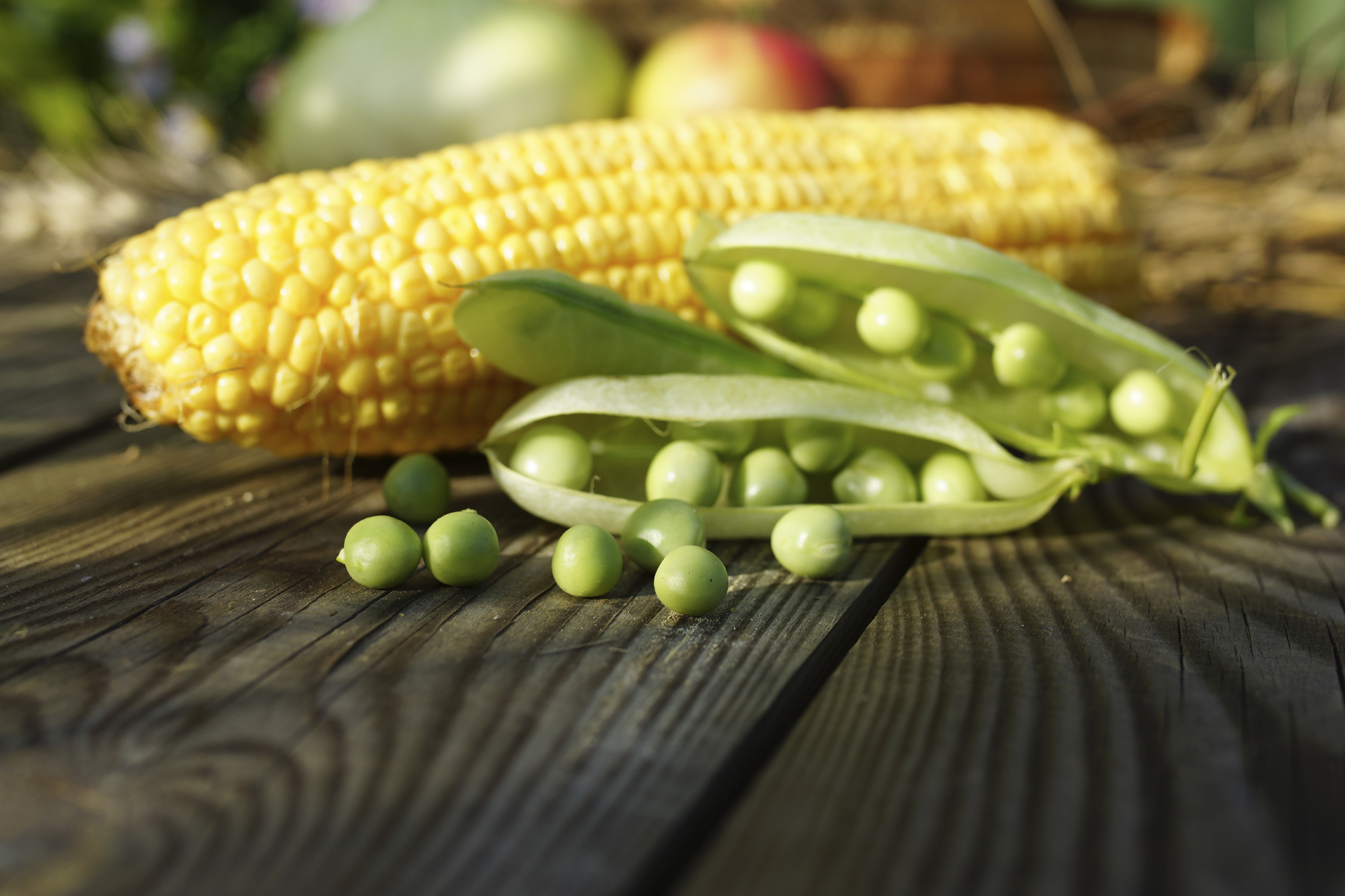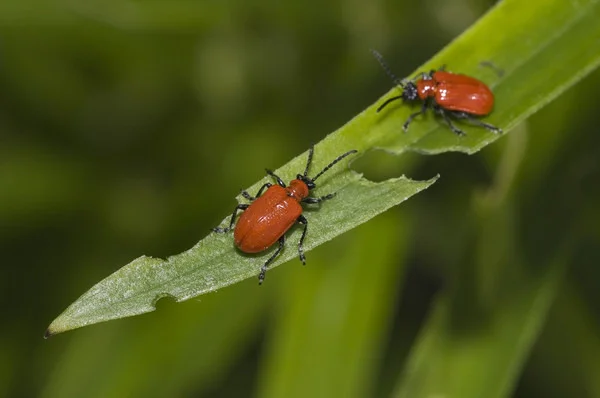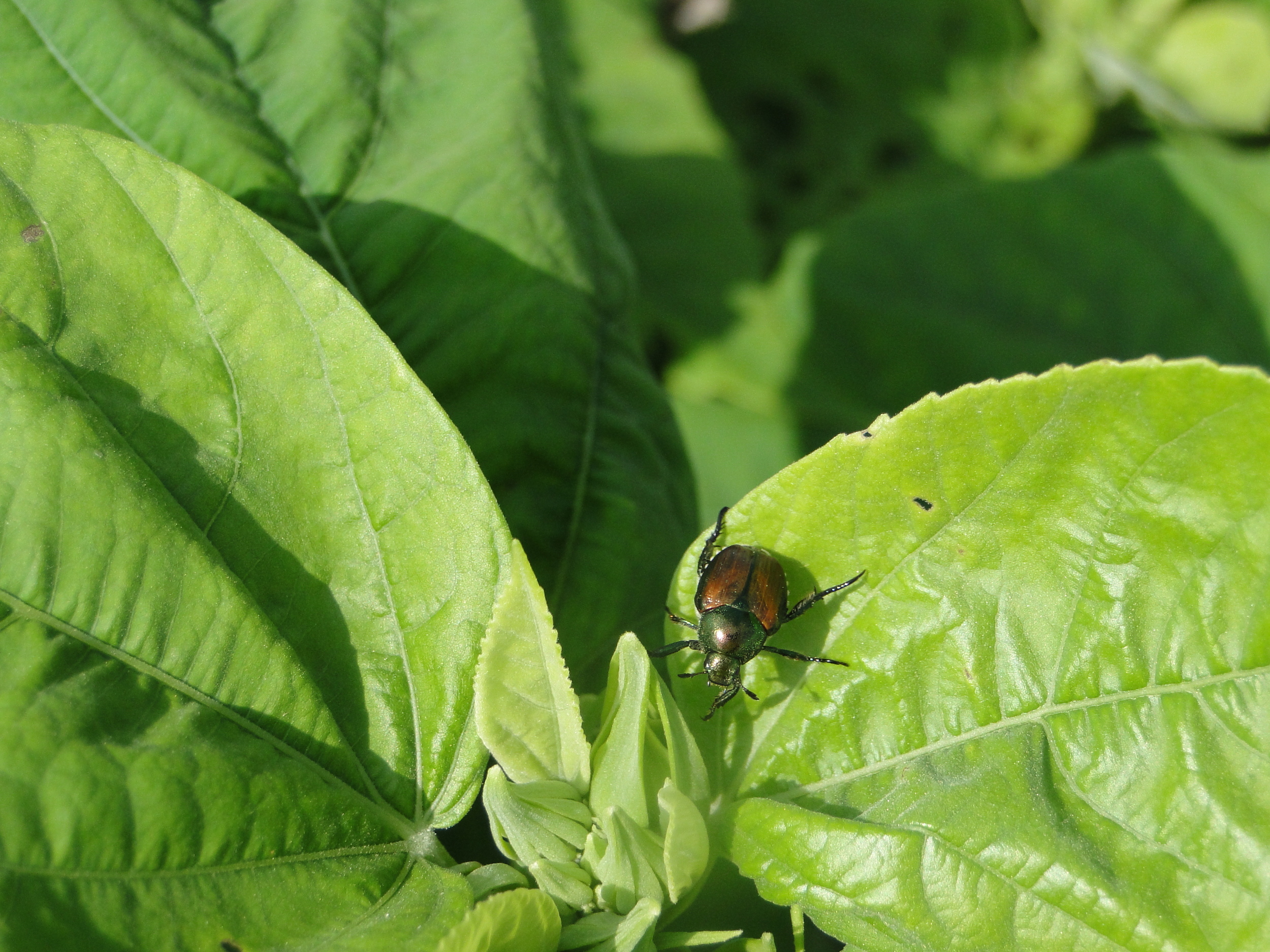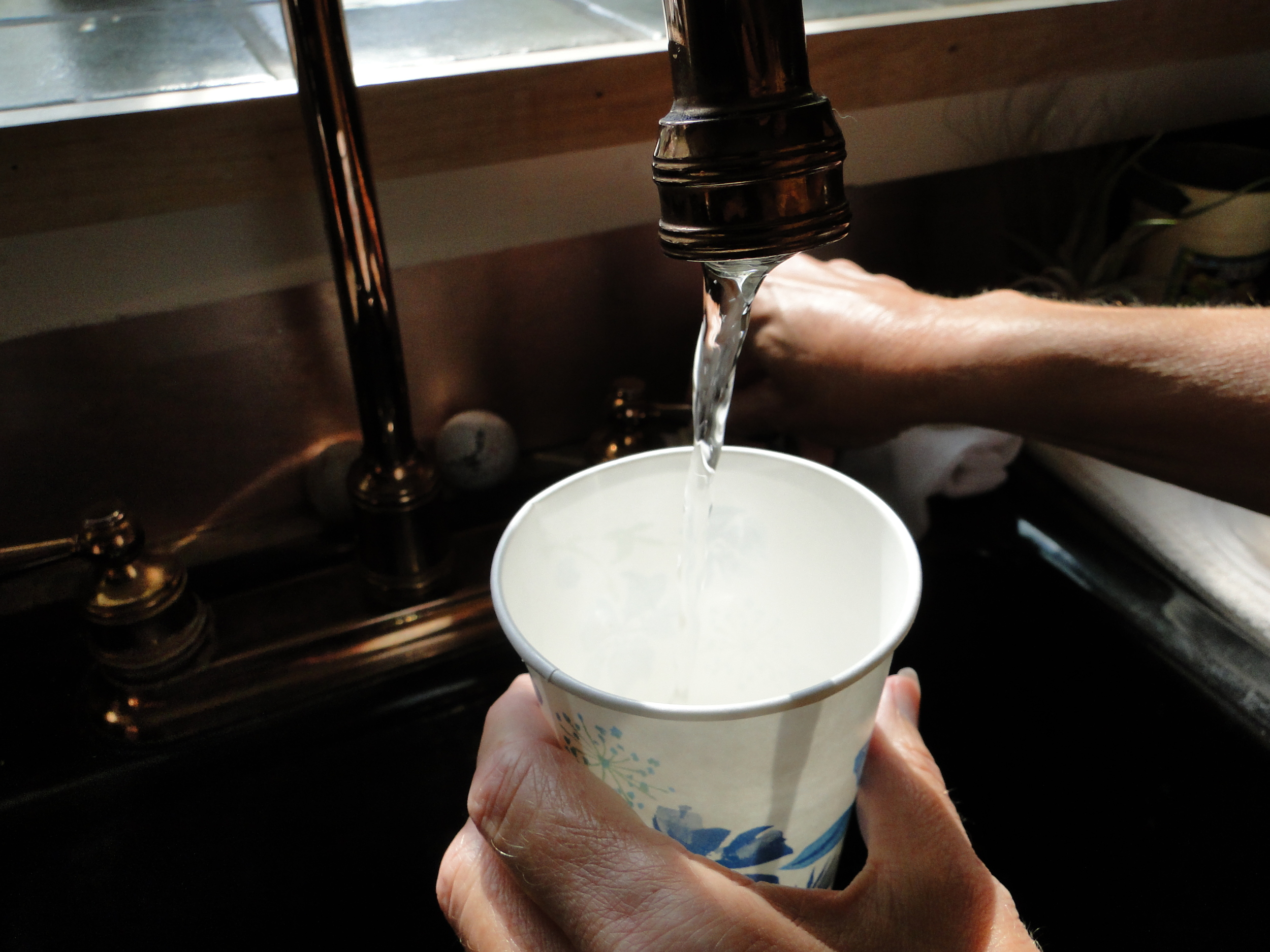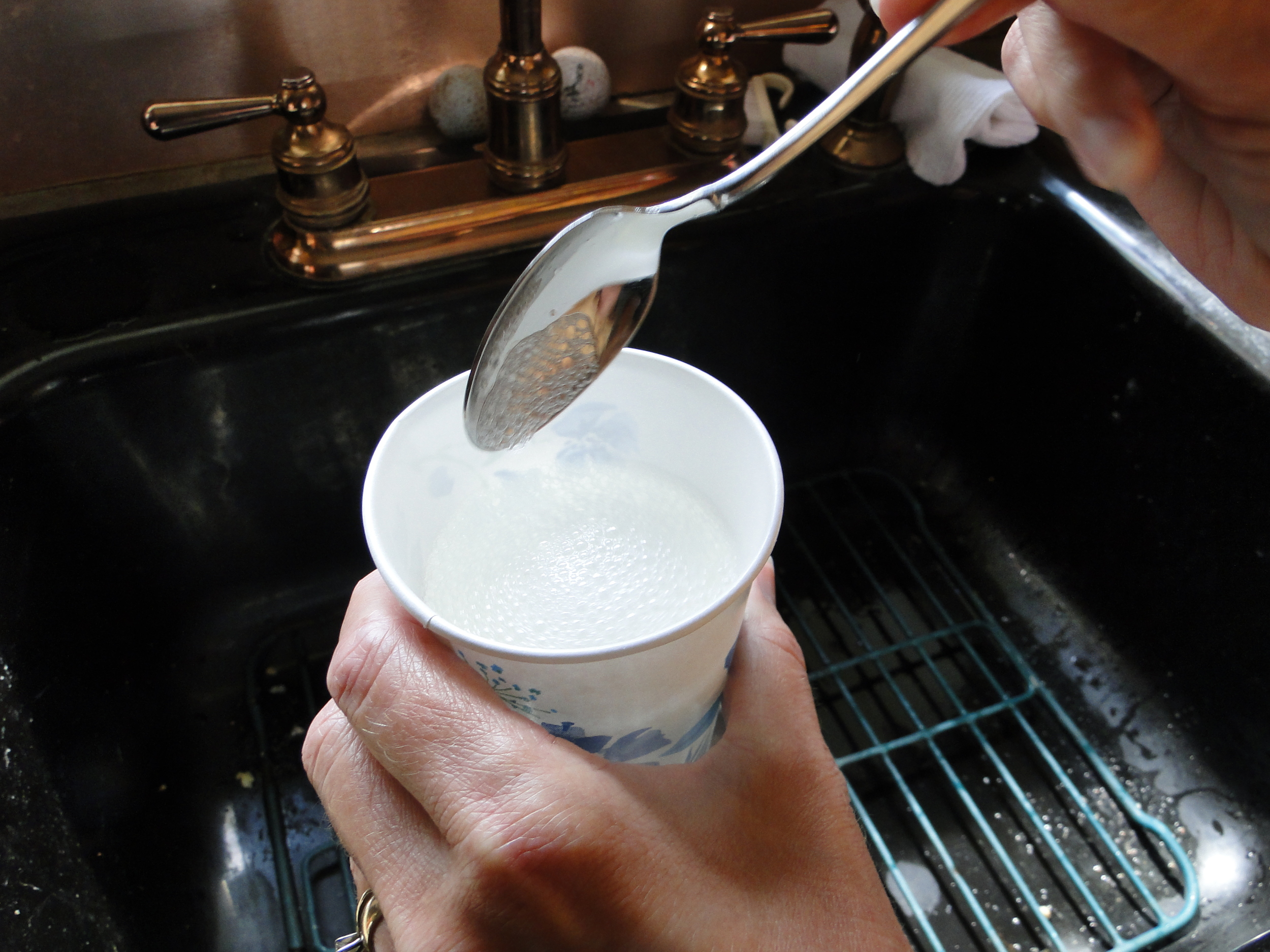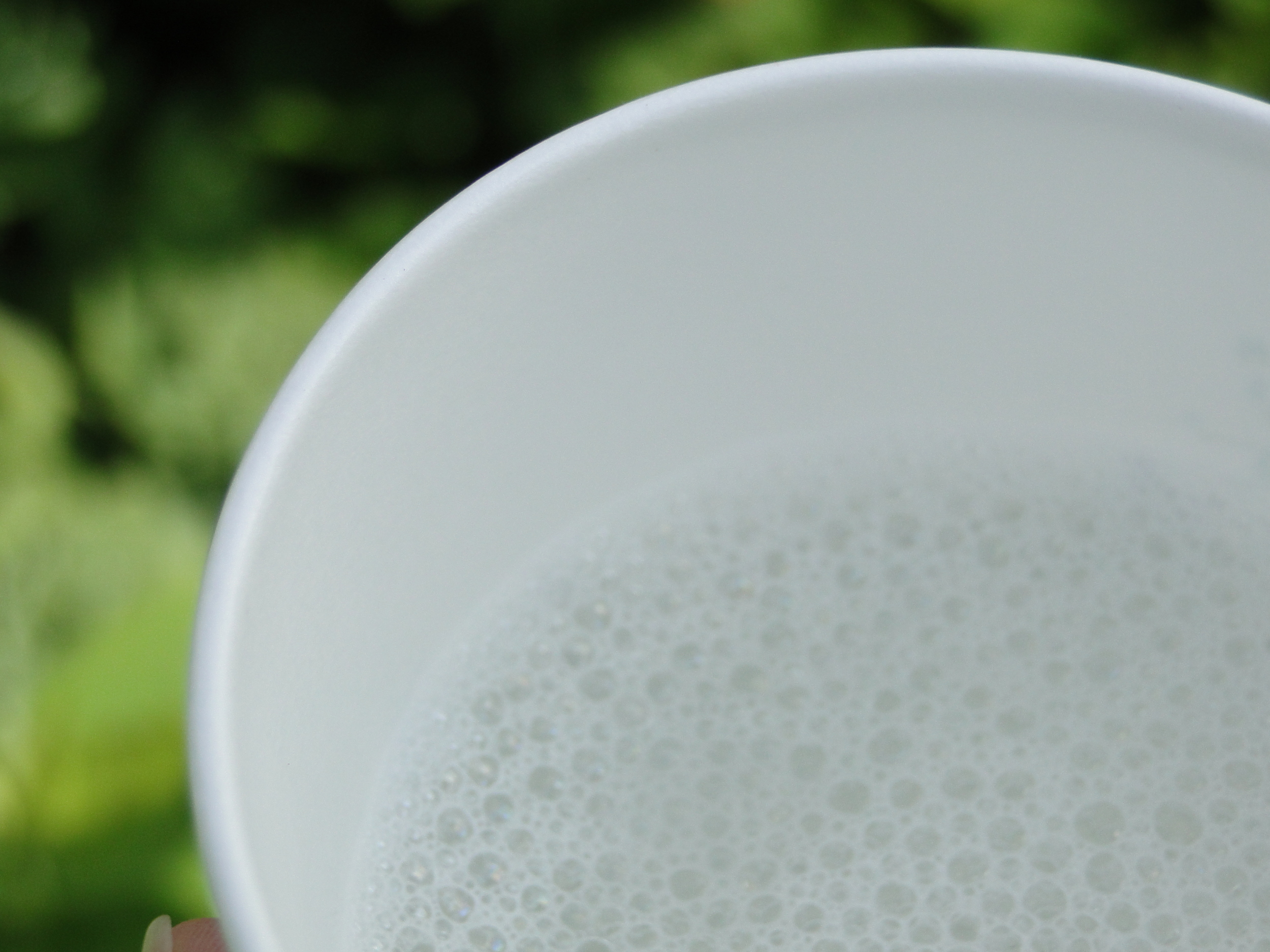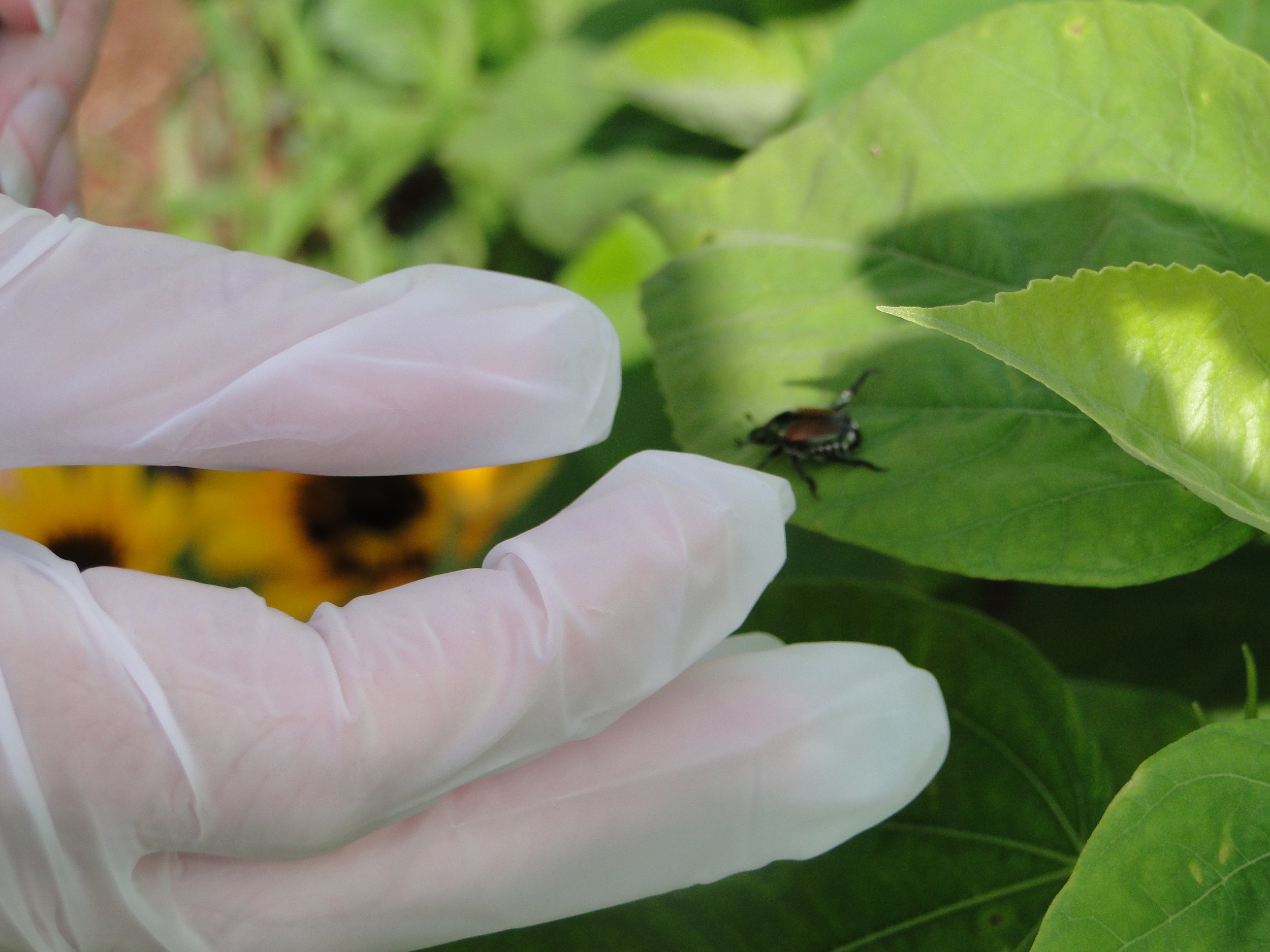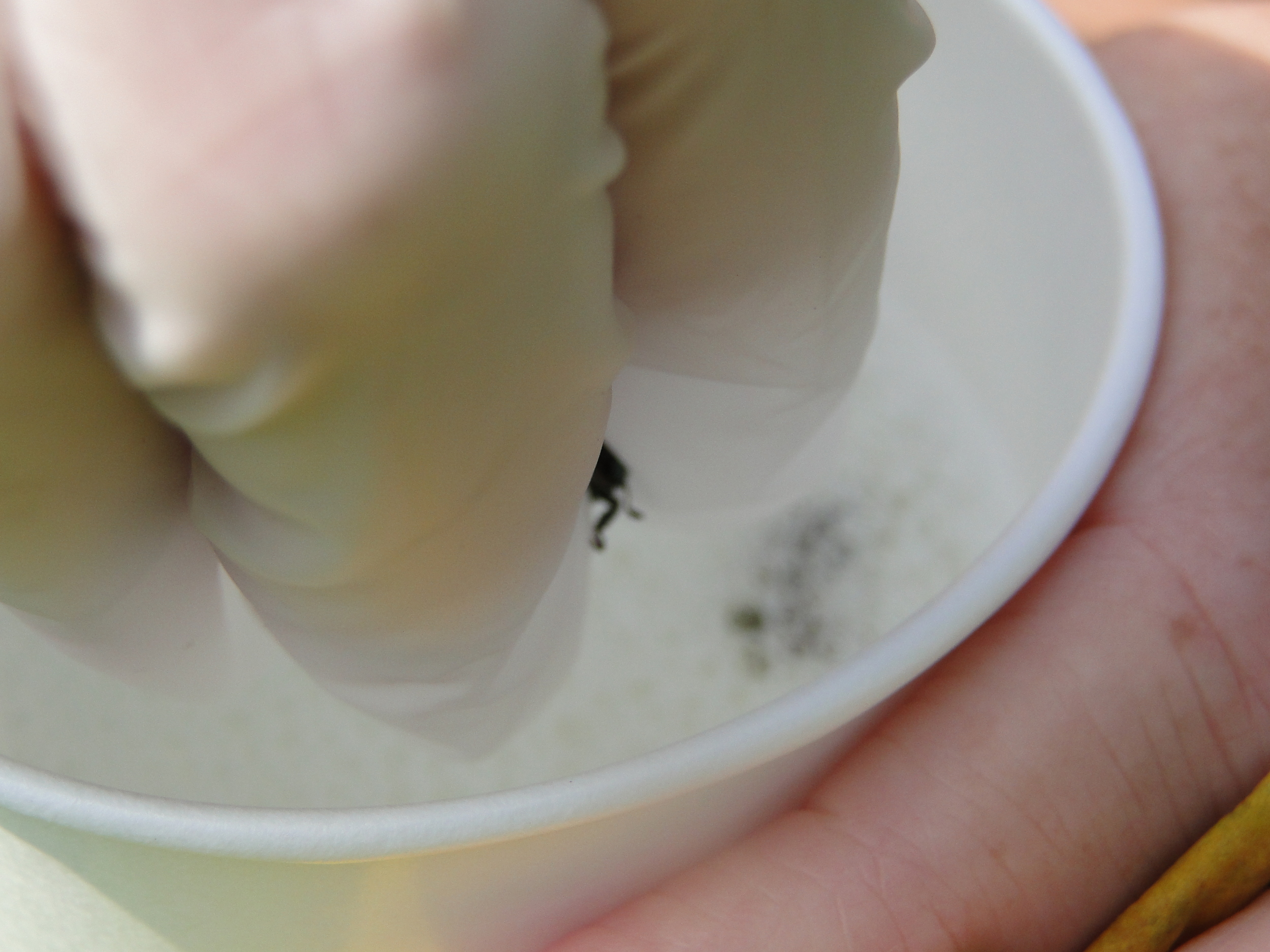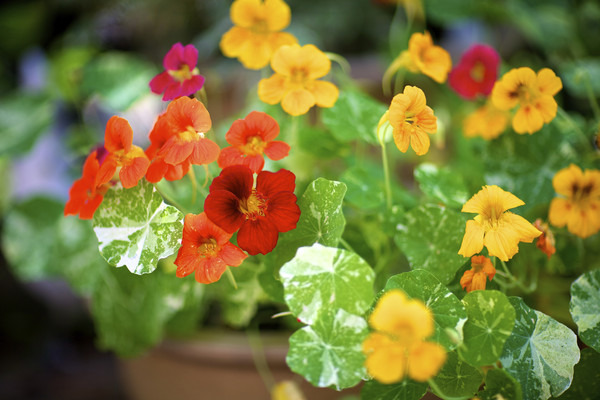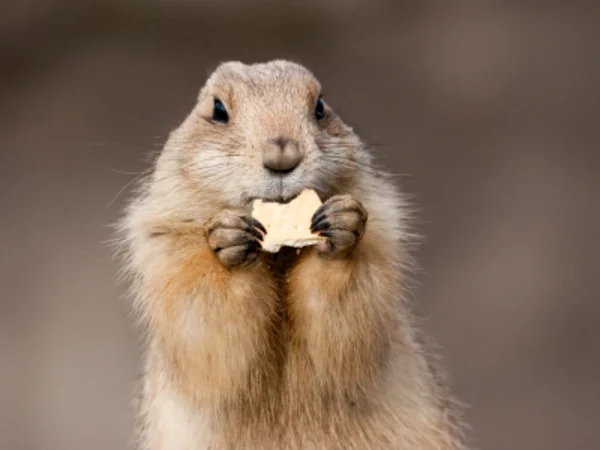- There are over 4,000 species of native bees in the United States.
- Bees are related to the ant.
- Bees are the only insect in the world that make food that humans can eat.
- Nectar from about 2 million flowers makes 1 pound of honey.
- Honey has natural preservatives and bacteria can't grow in it.
- Honey was found in the tombs in Egypt and it was still edible!
- Bees can smell hundreds of floral varieties and identify pollen from miles away!
- A hive of bees will fly 90,000 miles, the equivalent of three orbits around the earth to collect 1 kg of honey.
- It only takes about 1 ounce of honey to fuel a bee to fly around the world
- The honey bee does not know how to pollinate tomato or eggplant flowers.
- Bees have two stomachs - one stomach for eating and the other is for storing nectar.
- Bees can better identify native plants as food sources than foreign plants.
- Every 3rd mouthful of food is produced by bees pollinating crops.
- Honey bees contribute over $14 billion to the value of U.S. crop production.
- U.S. honey bees also produce about $150 million in honey annually.
- Colony collapse disorder is partly responsible for the loss of some of our bees.
- Male drone bees don't have a stinger.
- If a worker bee uses her stinger, she will die.
- Swatting at bees causes them to release pheromones that call for more bees.
- Bees depend on flowers Spring, Summer, & Fall. When planning your gardens, be sure to include nectar sources for all seasons.
Tips for what to do in your garden in the early spring (March and April):
- Clean up any debris left from the Fall such as leaves and branches.
- Apply Corn Gluten or an organic weed prevention in early March (if no Snow on ground)
- Gradually remove winter mulch as soon as you see signs of plants emerging from the soil.
- Cut back any perennials that weren’t cut back in the fall, but wait until new growth appears on those with woody structures such as Butterfly Bush, Caryopteris, Sage, Rue, Germander, Lavender, and Perovskia (Russian Sage). Cut these back to 14 – 18”.
- Cut down any seed heads leftover from the winter.
- Cut ornamental grasses down to about 6 inches before new growth begins. Do not cut down evergreen grasses such as Carex, Festuca or Helictotrichon. For evergreen grasses, use your hands to pull the dead foliage out of the crown.
- Limit pruning to removing dead wood and thinning branches to allow more light to reach the plant.
- Prune fall-blooming shrubs and trees. Wait to prune spring-blooming shrubs and trees until after they have flowered, we typically prune Spring flowering shrubs in late June.
- Put a handful of ground lime around the base of each clematis vine.
- Spray woody plants and shrubs with horticulture oil for protection from insects such as scale, lacebugs, aphids, mites, and hemlock woolly adelgid. This must done when the temperature is above 40 degrees and there are clear skies.
- Plant cool-weather vegetables such as peas in mid-march (if soil is workable). We usually plant our peas around Saint Patrick's Day.
- Mulching in early spring will help control weed seedlings. However, be careful not to cover any wanted seedlings, such as Verbena Bonariensis.
- Fertilize with organic fertilizers such as Plant Tone, Rose Tone, Flower Tone. If you feed the soil, the soil will feed the plants. Use Hollytone for acid-loving plants.
- Begin fertilizing Rose Bushes in April with ¾ to 1 cup of Rose Tone once a month until August. Begin a fungicide preventive spray program. An organic control for black spot is 2 tablespoons of baking soda, 1 tbsp horticulture oil and 1 teaspoon of dishsoap mixed in a gallon of water.
These crops grow best in cool weather:
Arugula
Beets
Broccoli
Brussels sprouts
Cabbage
Carrots
Cauliflower
Collards
Kale
Lettuce
Onions
Peas
Potatoes
Radishes
Scallions
Spinach
Why are bees important?
Bees are responsible for pollination valuing nearly $15 billion in crops such as almonds, other nuts, fruits, vegetables, and berries. In California alone, the almond crop uses 1.3 million bee colonies which is about half of all of the honey bees in the United States. The number of bee colonies has been steadily dropping since the 1940’s while the need for pollination is growing steadily as well. As a result, bees are being imported. This poses a problem in that with the introduction of bees from other areas, there is an introduction in pathogens and pests that are fatal to the bees.
But, where have all of the Bees Gone?
While it doesn't appear that any of the bees have common environmental factors that could attribute to their illness, death, and disappearance, 3 factors have been identified. Pesticides could be a cause of issues with the bees, specifically, neonicotinoids. Another possible cause suggested by researchers is a new parasite or pathogen not yet familiar to the bees. The prime pathogen suspect is Nocema: a parasite that not only causes dysentery in the bees but renders them unable to fly due to disjointed wings as well. This parasite is in addition to the better known Varroa Mite. The third possible cause is an increasing level of stress among the hives. Research has shown that stress in the worker bees can cause decreased immune systems which can make them more susceptible to an array of diseases.
What can be done?
You can switch to natural and organic pesticides in your garden, ones that will not harm the honeybees in your area. Additionally, you can plant bee attracting plants to boost the honeybees and pollination in your area. Some plants that attract honeybees include:
Dill, Borage, Chives, Mint, Oregano,Thyme, Comfrey, Catmint, Sea Holly, Globe Thistle, Coneflower, Cleome, Zinnia, Aster, Alyssum, Salvia, Sedum, Asclepias (Butterfly Weed), Lavender, Joe Pye Weed, Sunflower and many more. Be sure to have plants in your garden for all seasons - spring, summer and fall.
If you’re looking for something new to add to your garden this year, sometimes the best gardening ideas are the oldest. The Three Sisters Method of vegetable gardening stems from the Native American tradition of companion planting. The premise behind the Three Sisters method is to create a vegetable garden that requires the least amount of tools. In this incredibly sophisticated garden plan, each plant benefits the other to create extended soil fertility and a plentiful harvest. This specific garden recipe calls for corn, beans and squash.
After mounding the earth to a 1’x2’ mound with the top flatted to a plateau, plant corn in the center. Next plant beans in a circle approximately 6” out from the corn. Beans germinate quite quickly, just pick out your favorite variety. Finally, plant the squash around the perimeter of the mound. When planting the squash be sure to either plant 3 seeds per hole, or if starting with plants keep multiple plants in each cell together.
You’ll want to plant this garden in full sun, it should receive at least six hours of sunlight per day. Also, when planting corn it’s best to have at least 4 rows as corn is pollinated from the wind. The multiple rows help aid in the pollination process.
The corn serves as food for the beans as well as a stake from them to grow up. The beans provide food and a nitrogen source for the corn and because they climb around the corn stalks, they actually provide more stability for the corn to stand through all New England weather - which we all know can be unpredictable. The squash plants drop leaves creating an organic mulch, this prevents the moisture in the soil from evaporating. The squash will protect the garden from even the driest summers. Squash also acts as a deterrent to predators, protecting the beans and corn.
These three vegetables are not only complementary growing partners, but also nutritionally compatible. The corn supplies carbohydrates, while the beans contribute protein, and the squash provides necessary vitamins. In the spirit of maximizing the minimal, this method shakes up the garden as well as providing a great history lesson for kids on some of the lesser known Native American practices!
Have you walked out to your gardens lately and noticed a very hungry beetle has moved in?
This beetle is the Red Lily Beetle which is definitely a ‘bad bug’ and devastates lilies. These beetles prefer true lilies and fortunately do not bother Daylilies (Hemerocallis). If you have lilies in your gardens (Asiatic, Oriental, Easter and Turk’s) pay attention weekly for the bright red beetles and also for the eggs on the undersides of the foliage. Examine the leaves for tan-colored, irregular-shaped lines about one inch long. These tan lines will be a row of eggs. Just before hatching, these eggs turn a bright red color. When eggs are found, they can be removed and destroyed.
If you only have a few plants in your gardens, hand-picking adults and eggs can be successful. Another option to control the reproduction of the Red lily Beetle is to use an insecticide. Products containing Neem and Spinosad are effective on the larvae and should be applied weekly. Neem is also sold as Bon-Neem. Spinosad is sold as Monterey Garden Insect Spray and Captain Jack’s Deadbug Brew. All of these organic products will need to be applied weekly during the growing season and have been found to be effective. Whichever method (handpick or insecticide) you prefer will make it possible for you to enjoy lilies in your garden this summer.
We always recommend mulching your vegetable garden with straw. It helps keep the garden warmed during colder periods and reduces how often you will need to weed throughout the summer.
Here’s some great info from Lucerne Farms:
3 Reason To Mulch Your Vegetable Beds!
Your vegetable bed is the one most deserving of the mulching practice, for a whole host of reasons. But here are three that will reduce stress on your plants and help increase your bounty come fall.
Mulching with Premium Ground Cover:
- Helps your plants’ roots stay at a consistent temperature during the season which enhances growth and reduces stress. During the beginning and end of the season, mulch is going to help the soil hold its heat. But when that mid-summer heat hits, your plants will be thankful for the cooler temperatures on their roots. This will help prevent heat stress and help your plants put its energy towards producing beautiful things for your table.
Gardening Mulch for Vegetables - Allows soil to hold a more consistent moisture level. Each plant varies on their desired moisture level, but all benefit from consistency. When consistent moisture levels can be met, our garden friends are able to put more energy into growing garden goodness, instead of having to conserve energy until the next watering.
- Provides protection for some of the hardest workers in our beds. People are becoming increasingly aware of the web of microbes operating within our soil. This soil web helps make nutrients readily available to plants. The healthier this web, the more nutrients your plants receive, and the healthier and happier they are. This means… you guessed it… more energy to put towards garden goodies.
If any of your plants look like this, you may have Japanese Beetle damage. There are many plants they enjoy to munch on and they are especially fond of plants such as Basil, Roses, Grapes and Hibiscus. If you’ve been noticing lots lately, it’s due to high temperatures. They tend to come out when the temps reach 85 degrees and above.
Control of Japanese Beetles
The most cost-effective way to eliminate Japanese Beetles is to hand-pick them early in the morning.
Pick off the beetles and drop into a cup of soapy water. We don’t recommend using beetle bags traps as they tend to attract more beetles to your yard.
Prevention of Japanese Beetles
Japanese Beetles lay eggs in late summer. The eggs hatch into larvae that overwinter in the soil. The larvae moves towards the surface of the soil/grass in the spring as it warms up, and eventually emerge into adult beetles. The larvae are white grubs that feed on the roots of grasses and soils.
They actually can cause a great deal of damage to your lawn. The best way to get rid of them permanently is to treat your lawn with an organic control. There are several methods to eliminate and/or reduce populations of Japanese Beetles. One method is an application of Milky Spore to your lawn. Milky Spore is a biological that will kill the grubs as the feed on the roots and soil. Other methods to prevent include include applying nematodes to your lawn, attracting native parasitic wasps and flies, and let your lawn go dormant during the hot summer months. Watering your lawn promotes the environment in which they breed.
As always we recommend the most natural and organic measures to eliminate this pest to enable you and your family to enjoy the outdoors.
For those who haven’t used flowers in cooking before, eating a flower might seem like an odd concept. You’ve likely picked off many of these flowers that garnished your dishes without even knowing they were actually edible. When choosing flowers to cook or bake with ensure that they were organically grown and of course, they are edible. Some of our edible favorites include:
Daylily (Hemerocallis) Daylilies have a mild flavor and can be eaten raw or cooked. They are delicious in a stir-fry and make a wonderful appetizer. Try stuffing them with cream-cheese dips or spreads.
Anise Hyssop (Agastache foeniculum) Anise Hyssop has a sweet, licorice-like flavor. The flowers are great in salads, fruit salads, and can also be sugar-glazed for decorating desserts.
Bee Balm (Monarda) – Bee Balm can be used to make tea.
Nasturtium (Tropaeolum) – Nasturtium has a peppery flavor. Both the leaves and flowers add flavor to salads and sandwiches. I tend to use the flowers in my salads because they add such interesting summer colors to my dishes.
Marigold (Tagetes) – Marigold has a spicy flavor and it often used as a vegetable or salad garnish. The most common Marigold for eating is ‘Lemon Gem’. We grow this variety specifically for cooking and keep in our herb section so it’s easy to find.
Pansy (Viola) – Pansies have a sweet mild flavor.These are great in salads, or sugared for decorating and garnishing. What I love so much about Pansies is you could have them blooming in your garden from March to December if you grow them in partial sun.
Calendula – Calendulas have a tangy flavor almost similar to saffron. They come in bright Oranges and Yellows and brighten up any plate. The petals and flowers look great in salads and when used as a plate garnish.
Chives (Allium schoenoprasum) – Chive flowers have a mild onion flavor and can be used both raw and cooked. You can separate the petals for mild flavor in a salad, or use the entire blossom for stronger flavor. These can also be used in a stir fry or when sautéing.
Garlic Chives (Allium tuberosum) – Garlic Chive flowers have a garlicky flavor. You can separate the petals for mild flavor in a salad, or use the entire blossom for stronger flavor. These can also be used in a stir fry or when sautéing.
Roses – (Rosa) – Roses petals can be used fresh or dried. I prefer fresh because they look so much nicer this way. They can be used in salads, desserts and teas. Also, they are quite beautiful when crystallized with sugar and used for desserts and garnishes.
Squash Blossoms – Squash Blossoms are one of my favorites. They are delicious fried or stuffed with cream cheese mixtures. My favorite way to prepare them is to fry them. First I dip them in an egg mixture and then in seasoned flour. They are such a summer treat.
Many of these edible flowers are long bloomers and the key to lots of blooms is to deadhead (remove spent blooms) when past bloom.
There are so many other edible flowers. When experimenting with flowers be sure first; that they are edible and second; that they are grown organically. What flowers will you be eating for dinner tonight?
This year we have more to contend with in our home garden. Not only do we have a woodchuck, but it has an entire family with babies. The babies are so cute and my children seem to think we can keep them as pets. They’ve eaten our squash, cucumbers and parsley. The babies also seem to be enjoying my Phlox panicualata (summer phlox) and Echinacea (coneflower).
Luckily the warm weather has just begun and all of these plants grow fast. We will just replace the vegetables and make it so they don’t want to visit our garden. There are many organic controls for woodchucks – fences, bloodmeal , hot pepper spray, garlic spray and the product Plantskydd.
I just went out to the gardens and applied Plantskydd last night. I have successfully used this product for many years to deter little critters from the garden. You can apply using different methods – around the whole perimeter of the garden or around the plants they tend to eat. Either way seems to be just as effective.
There are some plants in particular that woodchucks seem to enjoy. These plants include squash, cucumber, parsley, Achillea (yarrow), Aster, Echinacea (coneflower), Dahlia, Phlox paniculata (summer phlox), Helianthus (sunflower), Papaver( poppy), Ipomoea (sweet potato vine) and Chrysanthemums (mum). These are plants that you want to be sure you protect.
You can fill your gardens with plants that woodchucks don’t tend to eat. Lucky for us this list is very long. You can add plants like Daylily, Veronica, Dianthus, Hosta, Anemone, Artemesia, Amsonia, Asclepias(milkweed, butterfly weed), Agastache (hyssop), Aruncus (goatsbeard), Cimicifuga, Campanula(bellflower), Astilbe, Coreopsis, Centaurea (bachelor’s button), Crambe, Eupatorium (Joe pye weed), Platycodon (balloon flower), Cranesbill (geranium), Euphorbia (spurge), Gypsophilia (baby’s breath) and there are so many more.
Personally I wouldn’t limit my garden to plants that don’t eat because once you apply a deterrent they stay away and find something else to eat. What do you use to keep woodchucks away from your garden?
